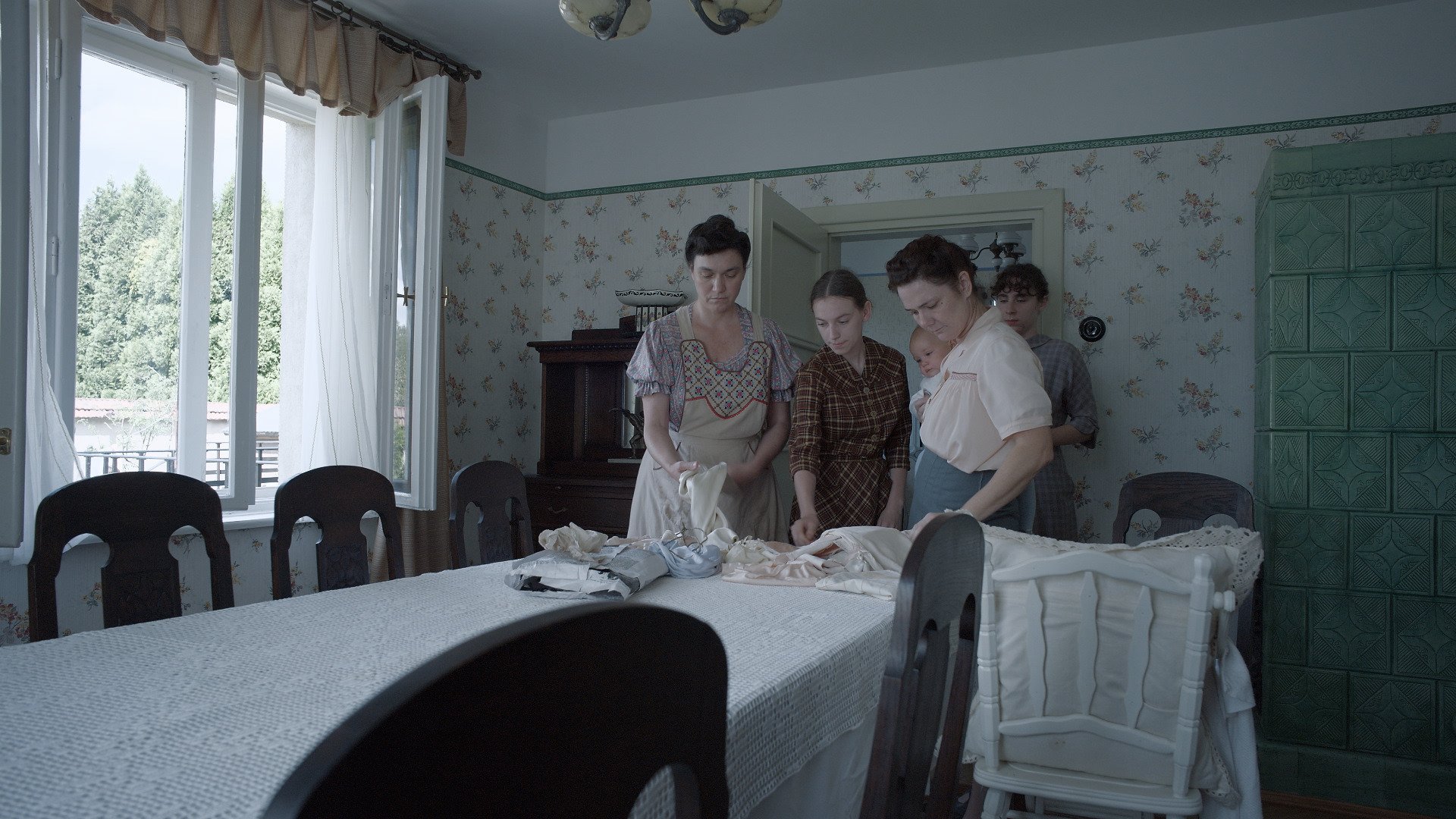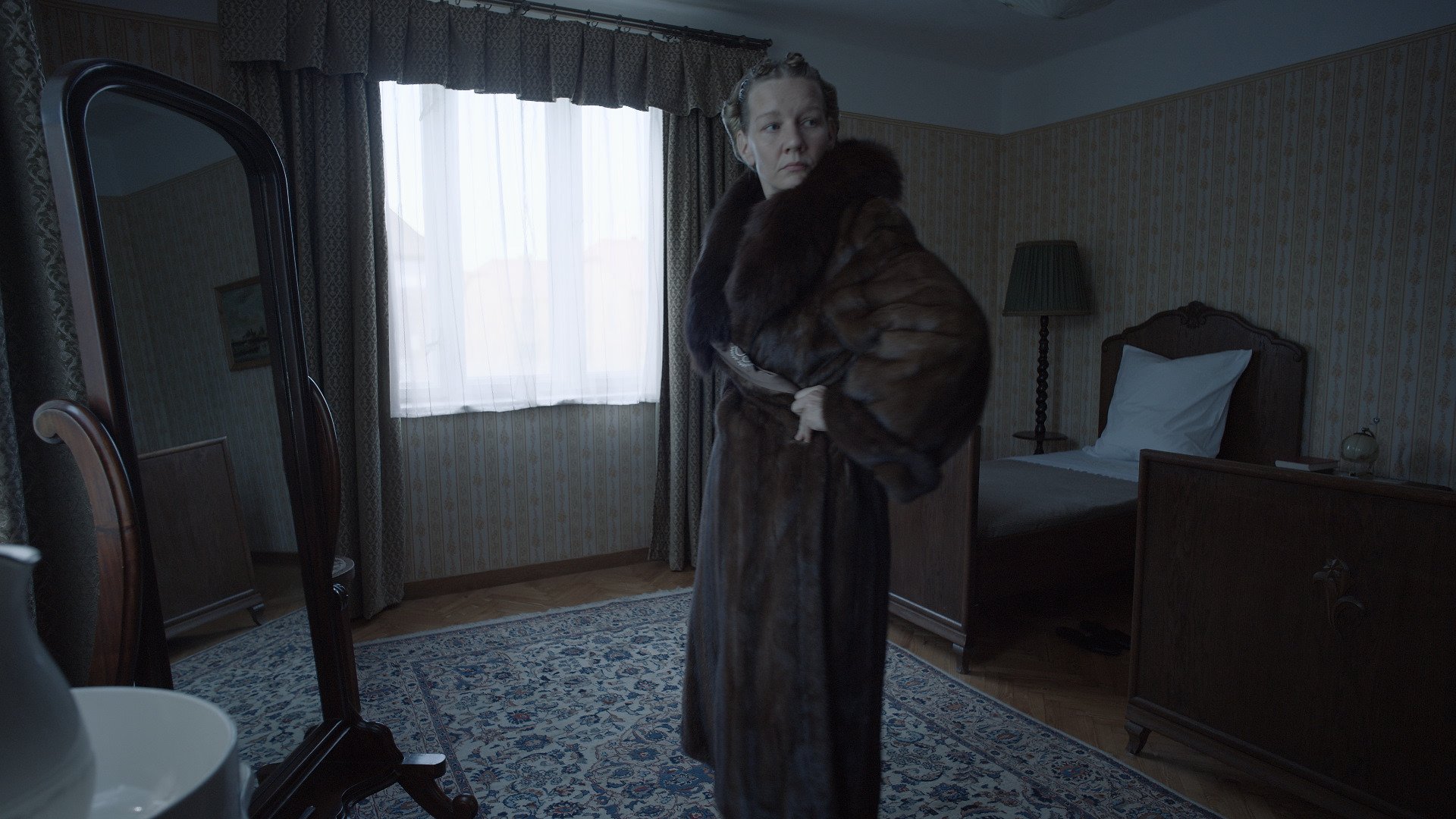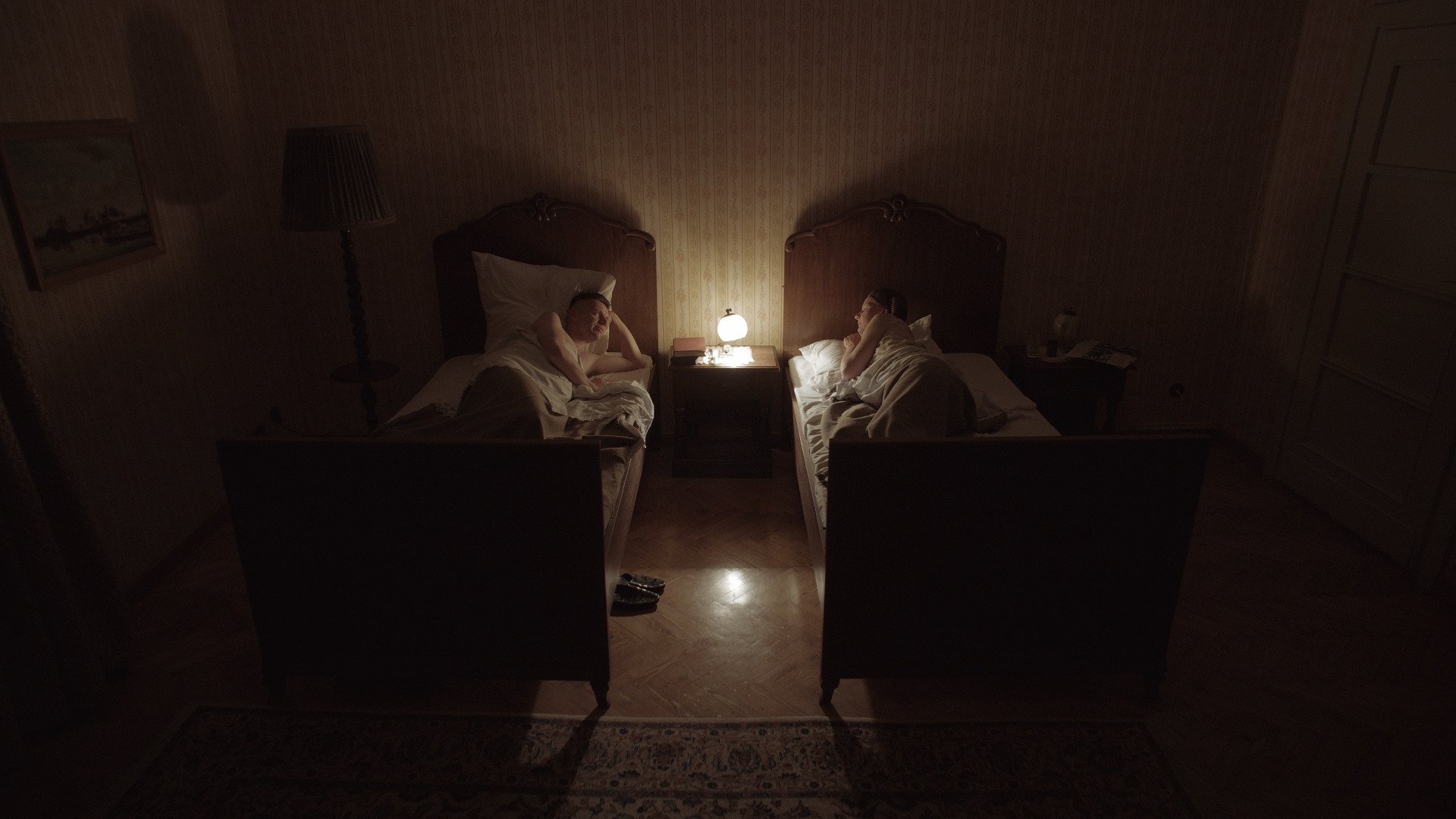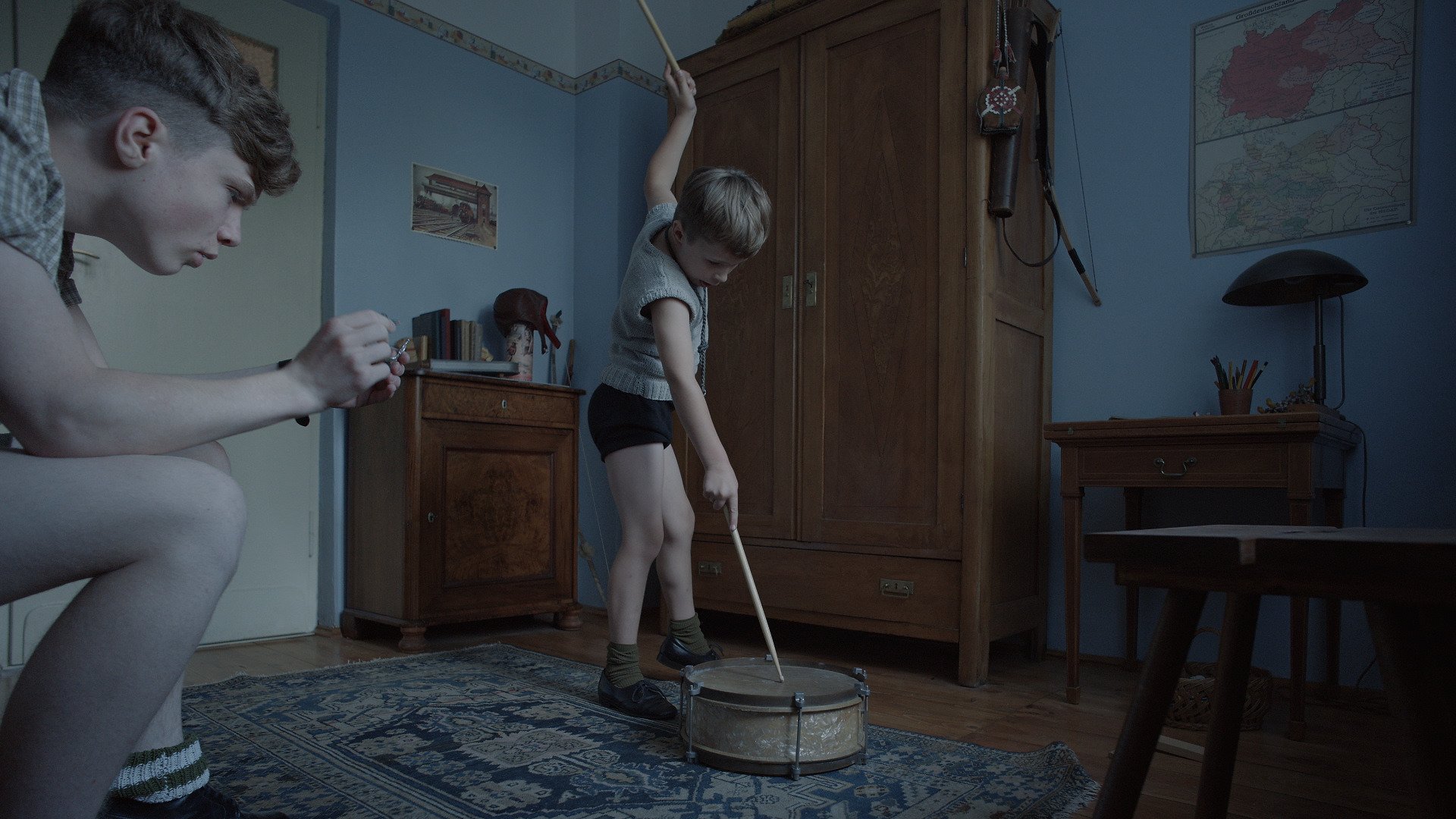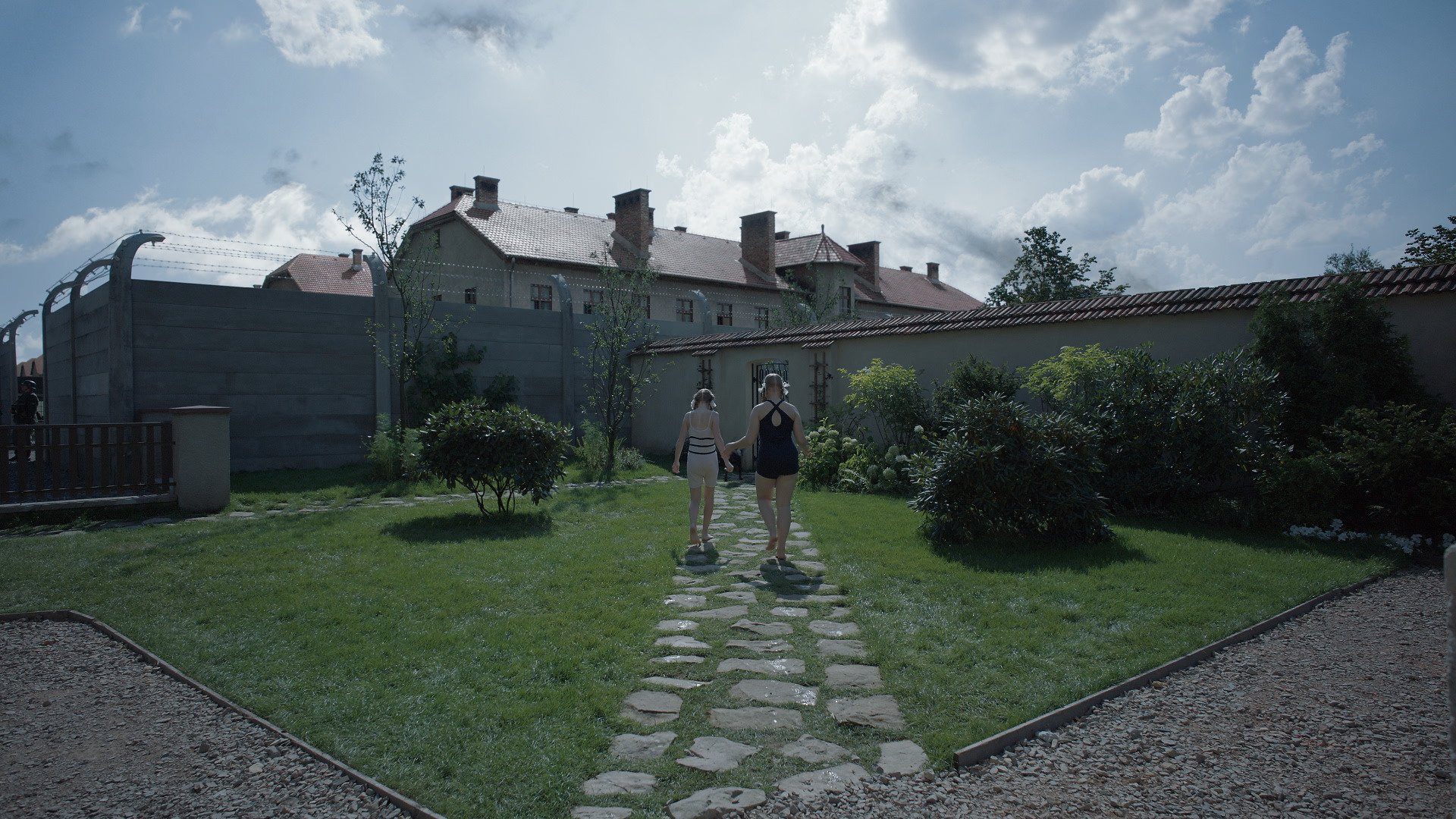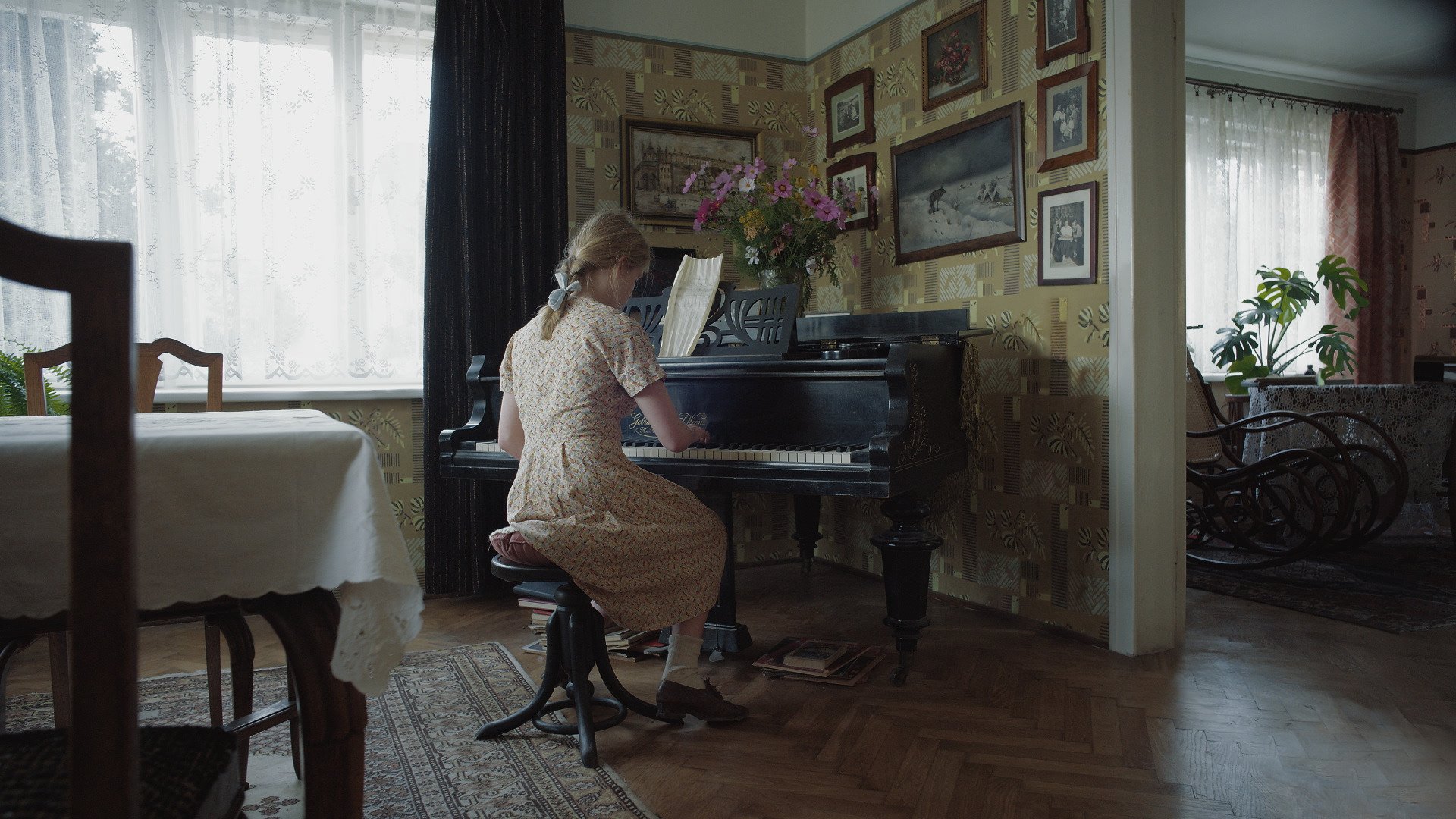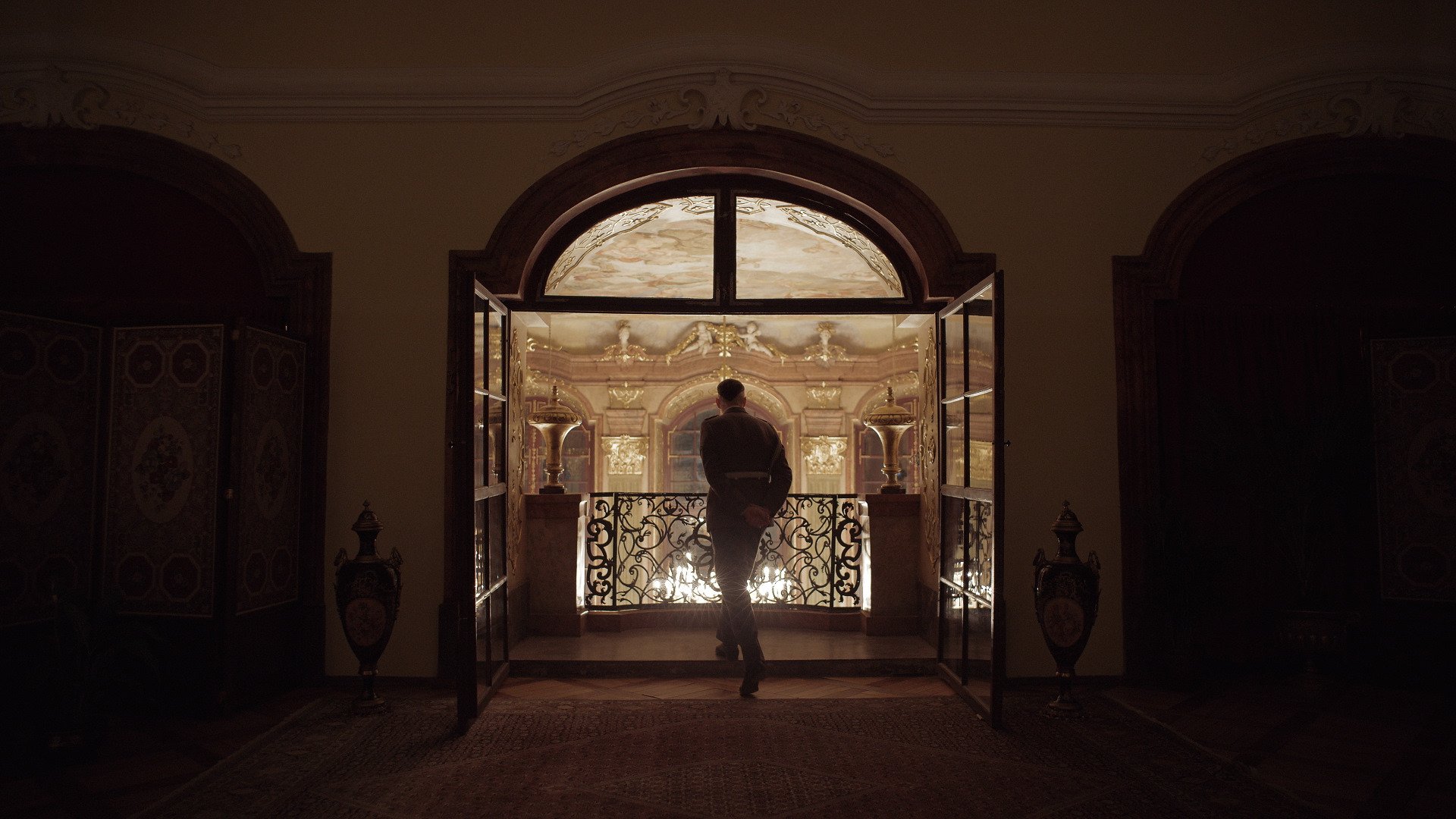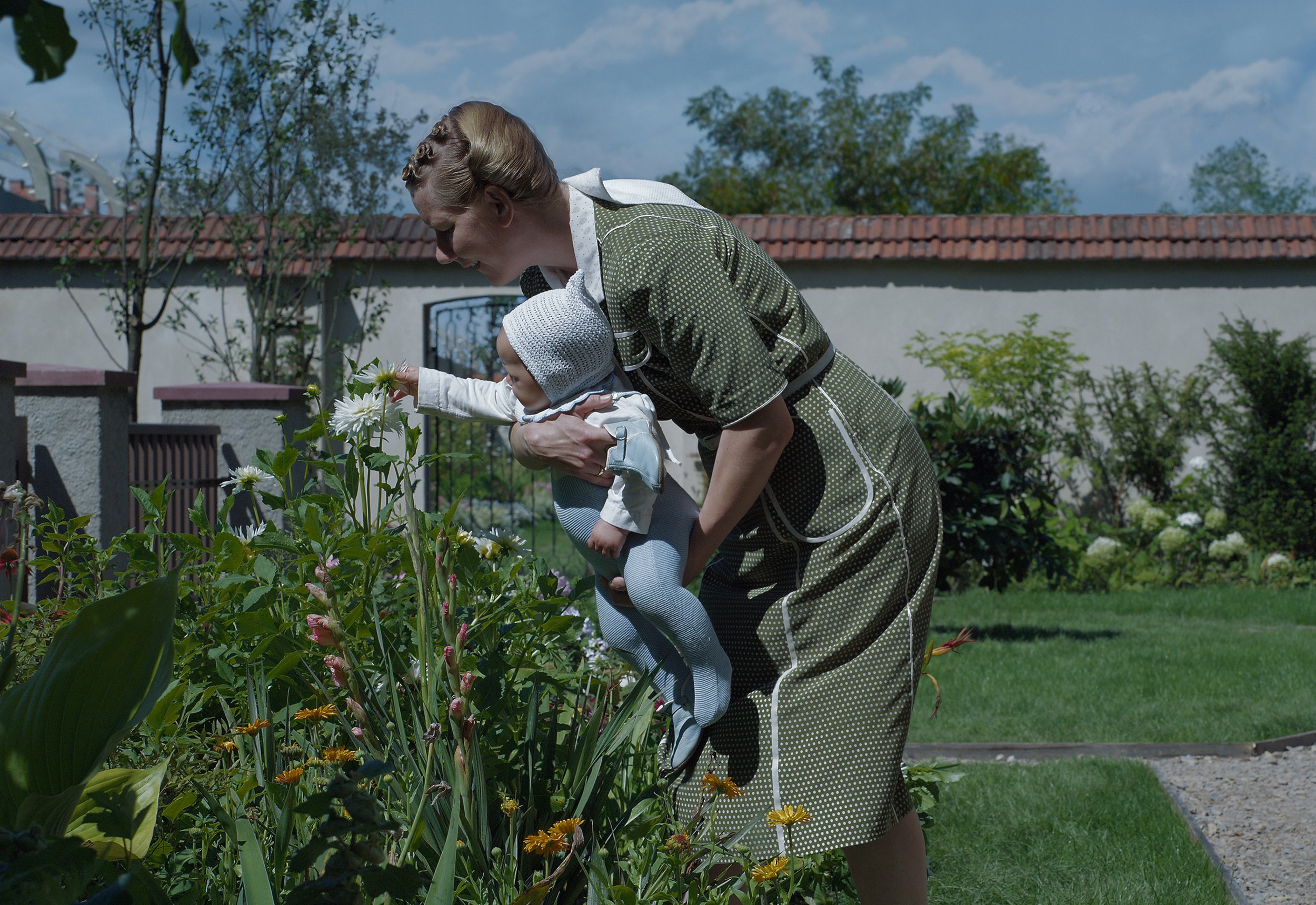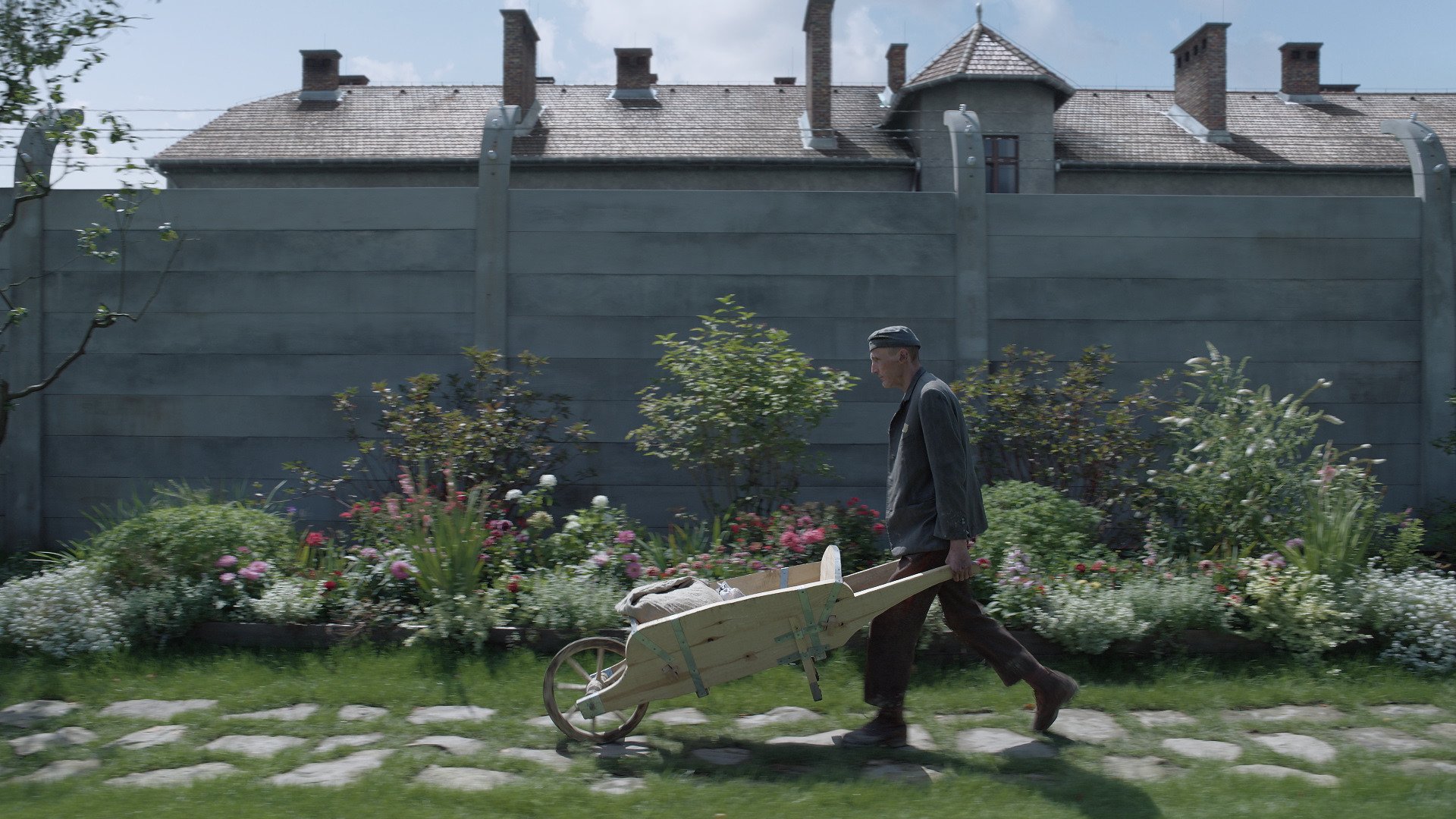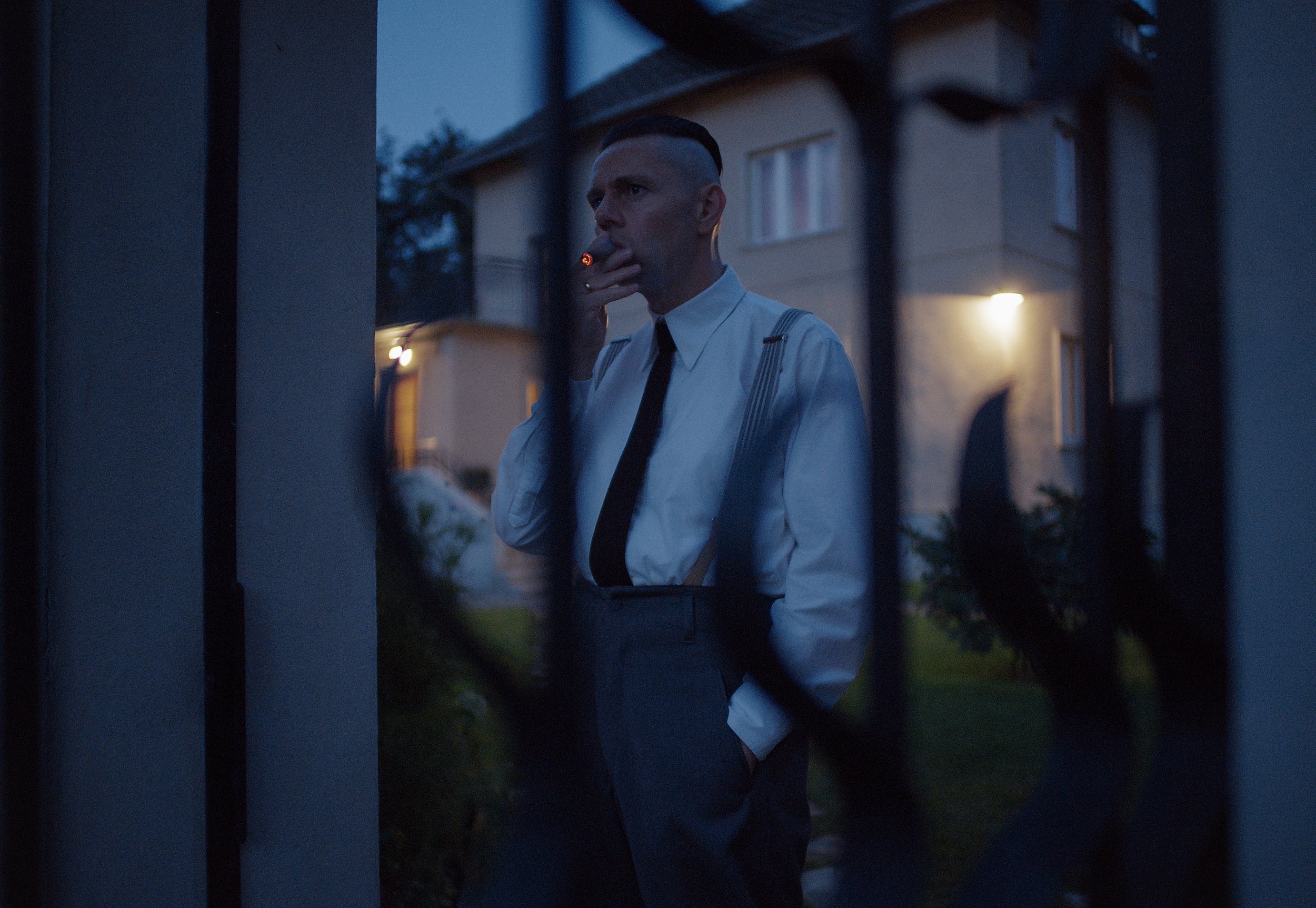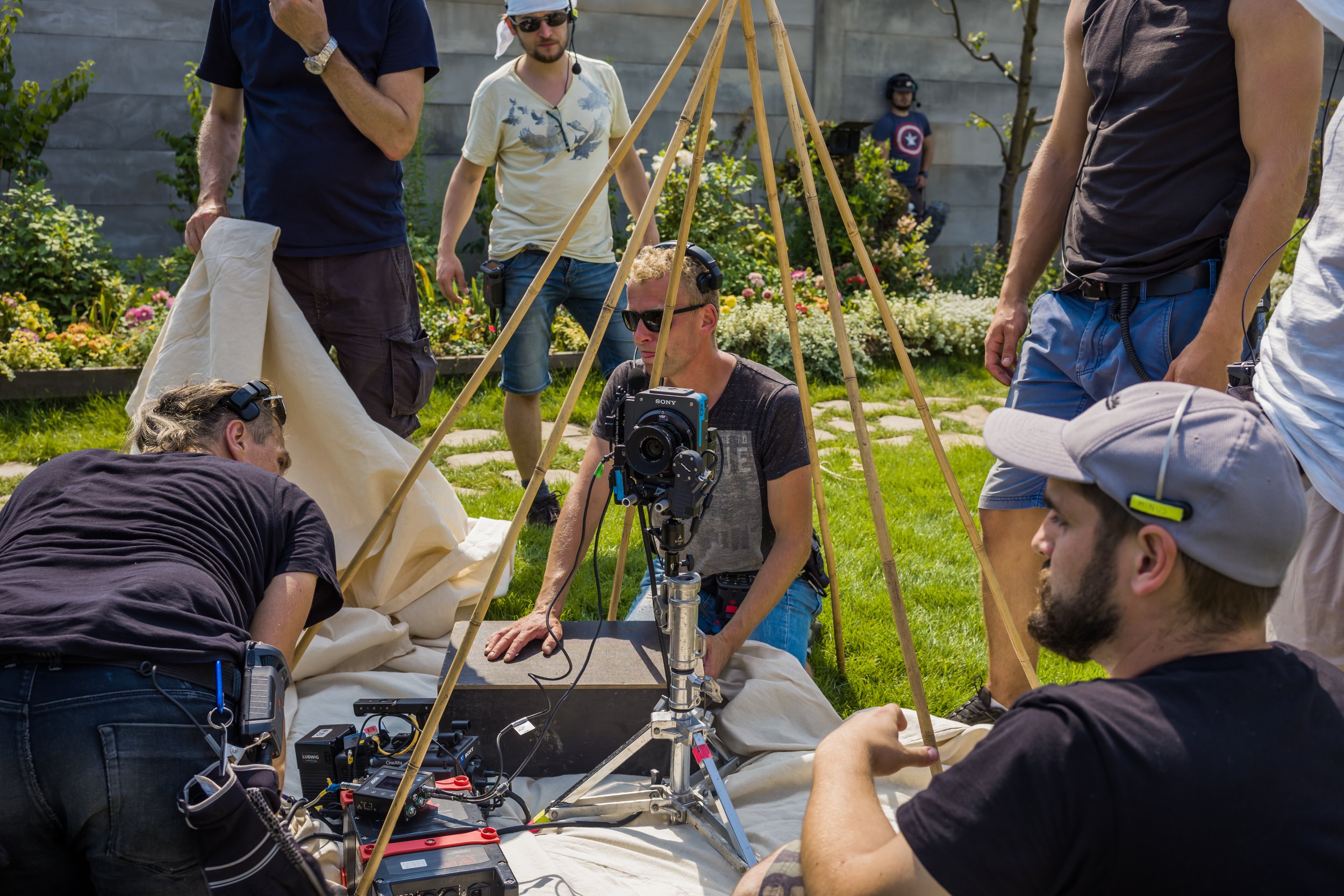MOVIE REVIEW: The Zone of Interest
THE ZONE OF INTEREST– 3 STARS
There’s a three-minute-or-so moment in The Zone of Interest when one of the main character’s elementary-aged sons is playing dice in his room and overhears shrieks and shouting from the other side of the tall brick wall crowned with barbed wire lining the western edge of the constructed village of finer-than-normal military housing. The young boy ventures to his window to listen closer, does so, and then dismisses it back to his game. He finds no adults. He asks no questions.
By that point of Jonathan Glazer’s film, we know when this period film takes place and exactly what resides on the other side of that wall. It’s between 1942 and 1944 in German-occupied Poland, and the partition borders a concentration camp. But this is not just any concentration camp. It’s Auschwitz II-Birkeneau where an average of 1,000 corpses were burned a day in its four crematoriums. A stone’s throw from the seemingly idyllic living situation of this youngster is an epicenter of some of the most unspeakably abhorrent actions in history.
LESSON #1: NORMALCY AND SERENITY NEXT TO HORRIBLE PLACES– When you think about it, every terrible place of war or violence– big or small, significant or insignificant– had some form of normalcy before it, right next to it, or has since been razed and transformed into something acceptable or serene now. Paris’s Place de la Révolution that hosted public executions by guillotine became the Place de la Concorde and is the French capital’s largest public square filled with fountains and lined with amenities. The D-Day beaches of Normandy have reverted back to farmland and vacation destinations. Go ahead and think smaller and more local too. That benign park bench you pass on your way has likely been both someone’s sleeping location and the spot of someone’s first kiss. Has someone ever died in the house or apartment you’re currently residing in? Whether we dwell on it or not, happy and horrible history is everywhere.
LESSON #2: THE LAYERS OF “HOW COULD THEY?”-- The Zone of Interest is hoping to force audiences towards that very action of dwelling with the heavy contemplation of what is occurring on the other side of that wall. The film follows the office hours and down time with family for Nazi Commandant Rudolf Höss (Christian Friedel of 13 Minutes), his wife Hedwig (Anatomy of Fall’s Sandra Hüller), and his five children. Committed to the Führer’s cause or ambivalent to its murderous output, they maintain a happy life orbiting the evil next door, because even monsters have spouses and children. Glazer’s screenplay makes it clear the adults know what’s going on and the children do not. Whether these German officers or their children did know or not what was transpiring in the compound, you as a viewer have to put yourself in their place in The Zone of Interest while still asking “how could they?”
One of the film’s most effective elements of mood is its Oscar-nominated sound work. Throughout The Zone of Interest, there is an ever-present rolling and deep white noise. You pick up on it early as one of your first questions of the film’s true setting. Afterwhile, the realization hits you that it’s the roaring fires of the crematorium furnaces. That dull dirge– interrupted occasionally by the sounds of faraway gunshots– replaces the opening mood formation score from Mica Levi (Jackie) to become the dominant soundscape of the whole movie. When the human screams become more audible than the gunshots, the viewer’s gruesome worries are confirmed.
The second artistic trait that makes The Zone of Interest and its dread standout is the cinematography. Even with little ventures to the surrounding roads and streams nearby Auschwitz II, Glazer never takes Łukasz Żal’s camera inside the compound with Rudolf. That glaring wall and the silhouette of the smoking chimney to accompany the aforementioned sound is as close as you get. He knows the imagined is worse than the explicit. To stay on the ground and within the domestic sets, Żal masterfully utilizes long takes, dolly track movement, and precise long-shot framing to maintain an arm’s length, hallway’s length, or lawn’s length of observational voyeurism captured with complete precision.
LESSON #3: FAILING TO RAISE QUESTIONS– All of this icky and effective ambiance brings us back to this review’s introduction. That playtime moment described earlier with one of Rudolf’s sons stands as one of many missed opportunities for The Zone of Interest to go deeper than voyeurism. Call me a presumptive parent because I’m willing to bet nine times out of ten a kid hearing those awful sounds gets his or her wheels turning with curiosity to the point that they are darting to an adults’ shirt sleeve to tug on with questions of what’s going on beyond that wall. The same can be said when a local Polish girl is seen hiding fruit along the outer border of the work camp locations or when Rudolf finds errant human remains in their wading stream and rouses his children to get out of the water. All those palpable and conspicuous moments elicit zero questions.
The Zone of Interest doesn’t go there, and it wasn’t going to. The cold and taciturn performances from Freidel and Hüller are designed to not create sympathy for the subjects, which is perfectly fine. Rather this film was just going to sit there and listen. That’s the experience it was aiming for, and, in doing so, it participates in a layer of its own “how could they.” The trouble is, like the Nazis portrayed in the film, the answers to that question are “quite easily” and “quite comfortably.” Because their needles don’t move, neither do yours against its painful pace of watching banal domestic life go by.
Glazer takes one big leap at the end of The Zone of Interest that could have been the second-best chance after the son hearing the violent commotion to make an emotional plea or take a step up to a stump to make a statement. The director intercuts a retching breakdown for Rudolf with scenes from Auschwitz’s present-day state as a museum. Łukasz Żal shot little views of the cleaning crew servicing what has become a tourist attraction, echoing that notion of normalcy and serenity in a formerly ghastly place. Maybe finally entering those walls long after is a statement enough for some, but it still feels like a distant flyover. To the informed who have long held and comprehended the history of the Holocaust, it’s difficult to be shocked by The Zone of Interest, especially after you have been moved by more tangible experiences before and impassioned truths better than those offered in this film.
LOGO DESIGNED BY MEENTS ILLUSTRATED (#1170)


